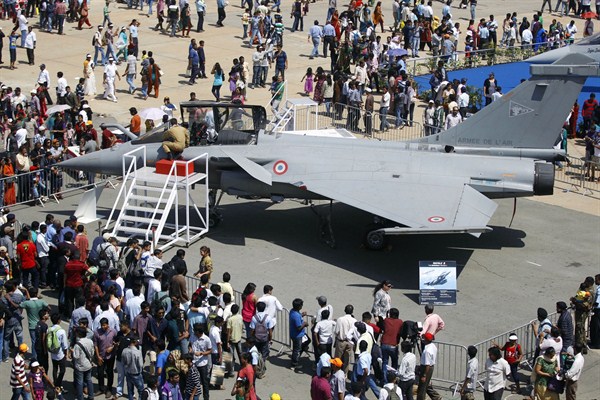The victory by Narendra Modi’s National Democratic Alliance in the Indian elections of May 2014 seemed to herald the start of a new era for India’s defense establishment. The new government came to power vowing to strengthen the Indian armed forces and reform the country’s jumbled and sluggish approach to defense acquisition. Such promises were music to the ears of Indian military planners charged with preparing for various conflict scenarios, including the possibility—however unlikely—of a two-front war versus neighboring rivals China and Pakistan.
Under the new approach laid out by Modi’s government, the military modernization process was supposed to be partially accelerated through the fast-tracking of a backlog of unconsummated procurement projects. This would ostensibly aid in reducing bottlenecks and, in turn, serve the additional purpose of bolstering the country’s struggling defense industrial sector through foreign partnerships and technology transfers. However, just a little over a year later, many of the same issues hindering India’s military modernization remain, from the air force to the navy.
These include a weakened currency that reduces India’s purchasing power on global markets; an emphasis on maximizing the involvement of the country’s struggling defense sector in complex projects; a byzantine bureaucratic approach to military procurement; ever-shifting program requirements; and a Defense Ministry quick to levy corruption charges at foreign vendors over the slightest hint of impropriety. Nowhere have these issues hindered the modernization process more than in the area of airpower.

